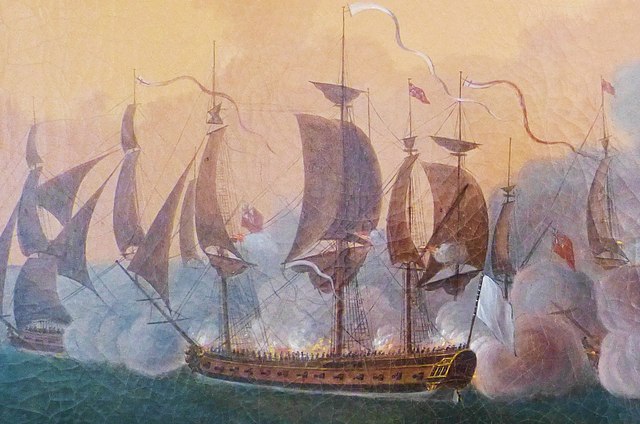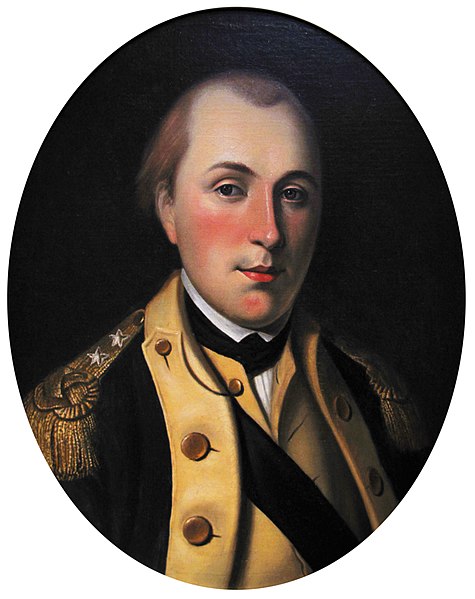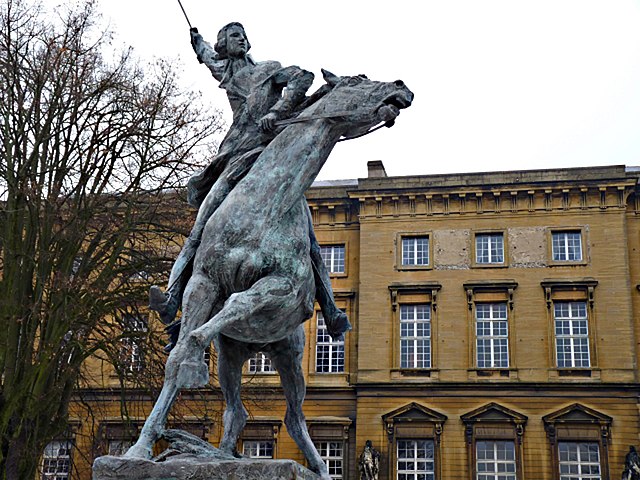French frigate Hermione (1779)
Hermione was a 32-gun Concorde-class frigate of the French Navy. Designed for speed, she was one of the first ships of the French Navy to receive a copper sheathing. At the beginning of the Anglo-French War of 1778, she patrolled in the Bay of Biscay, escorting convoys and chasing privateers. She became famous when she ferried General La Fayette to the United States in 1780 in support of the rebels in the American Revolutionary War. She took an incidental role in the Battle of Cape Henry on 16 March 1781, and a major one in the action of 21 July 1781.
Hermione in the Naval battle of Louisbourg, by Rossel de Cercy
Hermione in action at the Naval battle of Louisbourg, 21 July 1781
Gilbert du Motier, Marquis de Lafayette
Marie-Joseph Paul Yves Roch Gilbert du Motier de La Fayette, Marquis de La Fayette, known in the United States as Lafayette, was a French nobleman and military officer who volunteered to join the Continental Army, led by General George Washington, in the American Revolutionary War. Lafayette was ultimately permitted to command Continental Army troops in the decisive siege of Yorktown in 1781, the Revolutionary War's final major battle that secured American independence. After returning to France, Lafayette became a key figure in the French Revolution of 1789 and the July Revolution of 1830 and continues to be celebrated as a hero in both France and the United States.
A portrait of Lafayette in the uniform of a major general of the Continental Army, painted by Charles Willson Peale, c. 1779-80
Lafayette's birthplace in Chavaniac, Auvergne
Lafayette's wife, Marie Adrienne Francoise
Statue of Lafayette in front of the Governor Palace in Metz, where he decided to join the American cause






